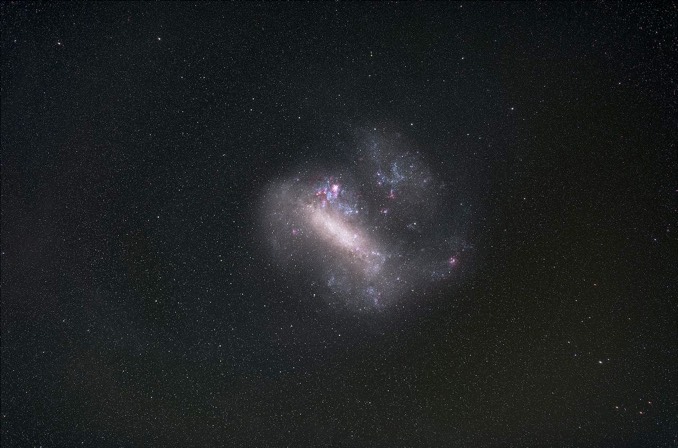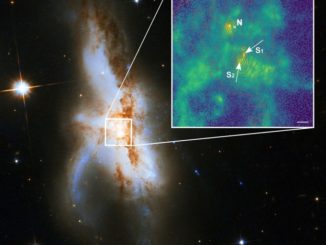
Studies indicate the Large Magellanic Cloud, a satellite galaxy some 160,000 light years away, will crash into the Milky Way in about 1.5 billion years, likely “waking up” the currently passive, supermassive black hole lurking at our galaxy’s core.
As a result of the merger, the black hole “will increase in mass by up to a factor of eight,” writes Marius Cautun, a postdoctoral fellow at Durham University’s Institute for Computational Cosmology and lead author of a paper in the Monthly Notices of the Royal Astronomical Society. “The galactic stellar halo will undergo an equally impressive transformation, becoming five times more massive.”
Most of the additional stars will come from the Large Magellanic Cloud, but a “sizeable number” will be ejected into the halo from the galactic disc.
And how might the collision affect Earth?
“The growth of the supermassive black hole following the future MW–LMC merger will trigger AGN (active galactic nuclei) activity and possibly generate jets which, in turn, can produce powerful (gamma ray) emission,” Cautun and his colleagues write.
“If energetic enough, γ-rays impinging on the Earth can cause mass extinctions by destroying the planet’s ozone layer. However, the galactic AGN will not be powerful enough to deplete the Earth’s ozone layer and is very unlikely to pose a serious danger to terrestrial life.”
But the merger will gravitationally eject central disc stars into the halo.
“Is the Sun a potential victim? Thankfully, this seems unlikely, as only a few per cent of the stars at the position of the Sun in our MW–LMC analogues are kicked out into the halo.”
Whew!



